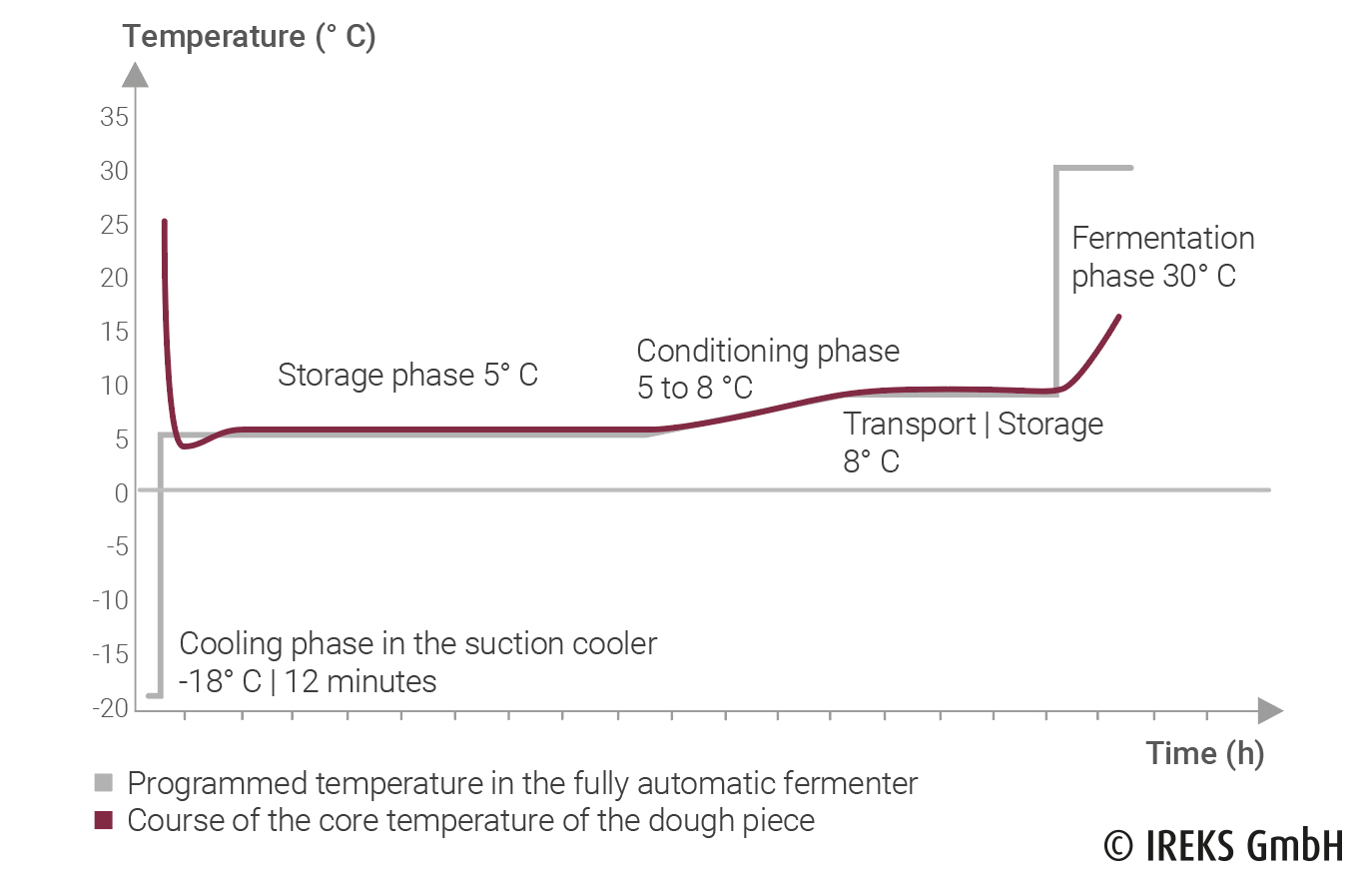Following production, the dough pieces are located in special boards with air vents.
The course of a temperature curve of fast cooling retarded fermentation is divided into five phases to achieve reliable storage and an optimum fermentation maturity.
1. Cooling phase
Rapid drop in temperature of the dough pieces in the stack of boards with suction cooling for approx. 12 minutes at -18° C and high circulating air speed to a core temperature of 5 – 8° C
2. Storage phase
In the fully automatic fermenter or in the cold store at temperatures between 5 – 8° C for up to 36 hours
3. Conditioning and maturing phase
According to the type, dough pieces are brought to a core temperature of 8° C or 15° C respectively (fermentation maturity)
4. Stiffening phase or transport to the branch bakery (depending on the method)
During the stiffening phase at approx. 8° C, the dough pieces are given the necessary stability for transport and storage
5. Fermentation phase
Bring to an optimum fermentation maturity at approx. 30° C; the core temperature of the dough pieces should be at least 15° C to avoid baked goods faults
The cold curve described in illustration 6.8 makes it possible to supply dough pieces with a fermentation volume of approx. 75 % to the branch bakeries. Before baking, a short fermentation phase takes place in the branch bakery.
Illustration 6.9 shows the course of the core temperature curve of fast cooling retarded fermentation which makes it possible to supply dough pieces with approx. 50 % fermentation volume to the branch bakeries. The remaining proof takes place in the stack of boards or in the fermentation chamber.



